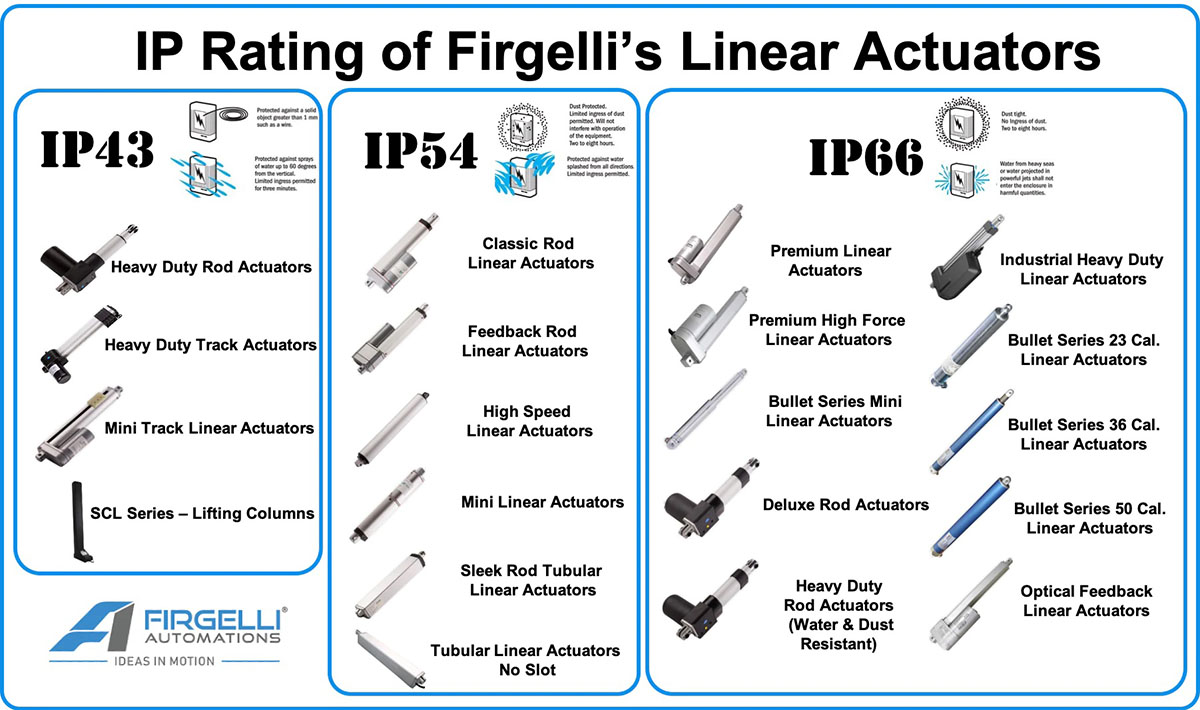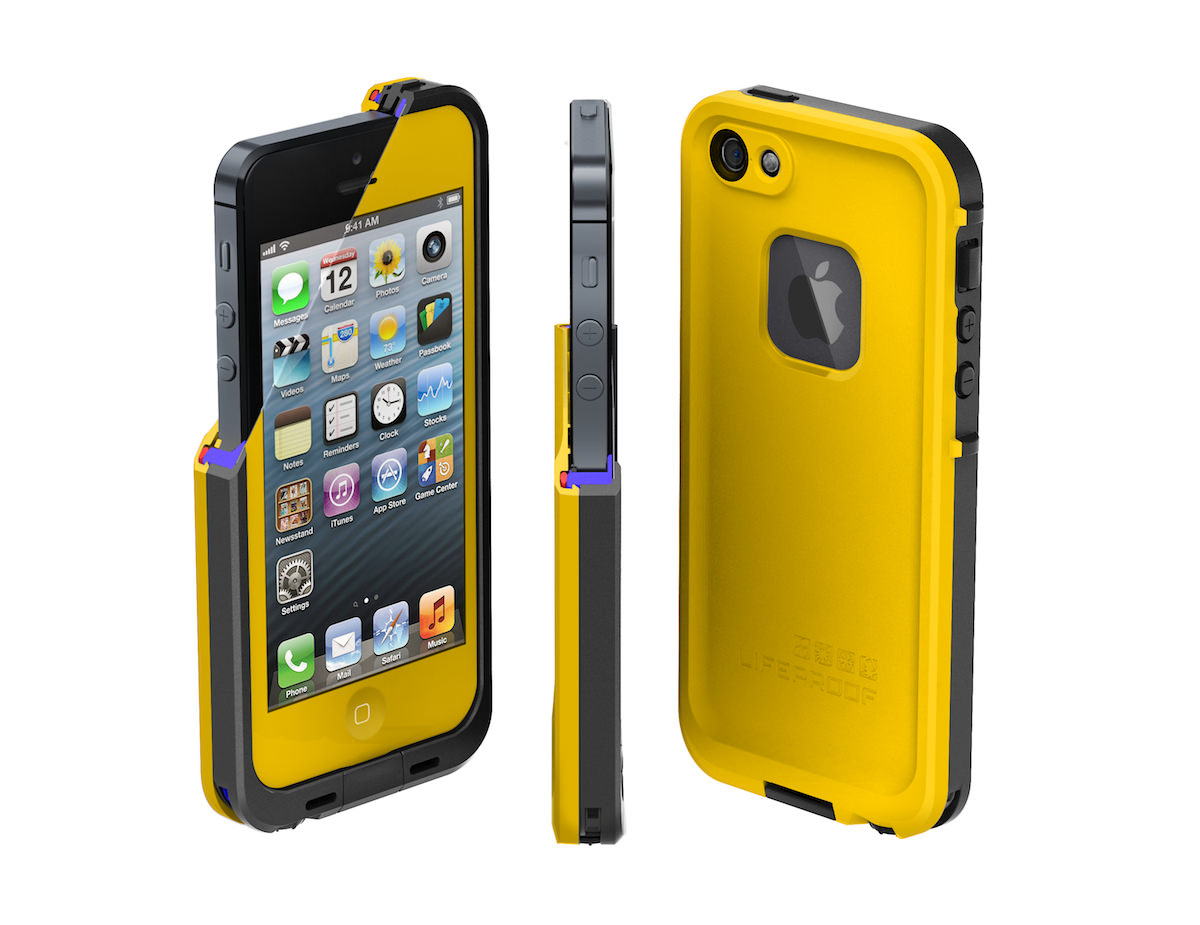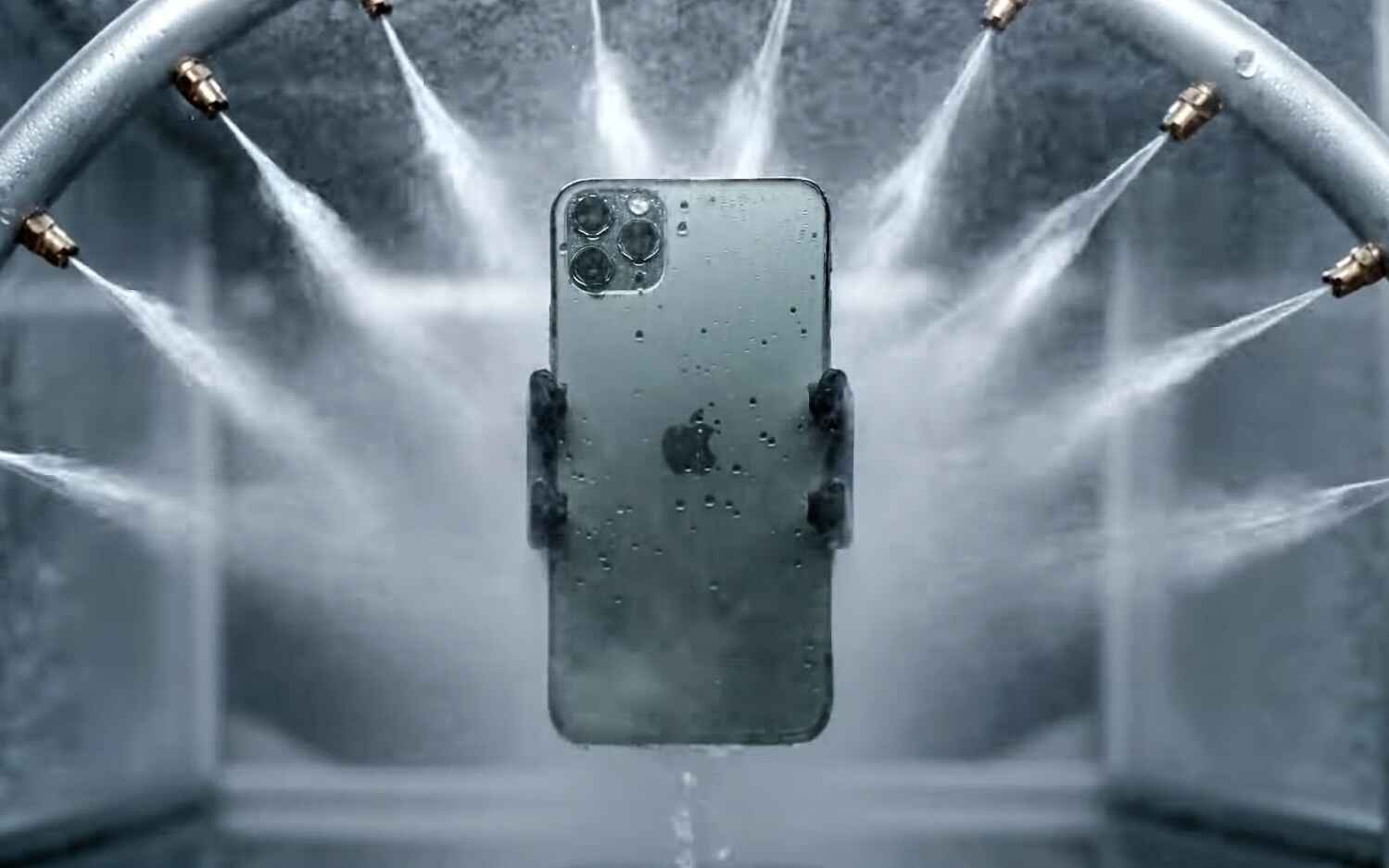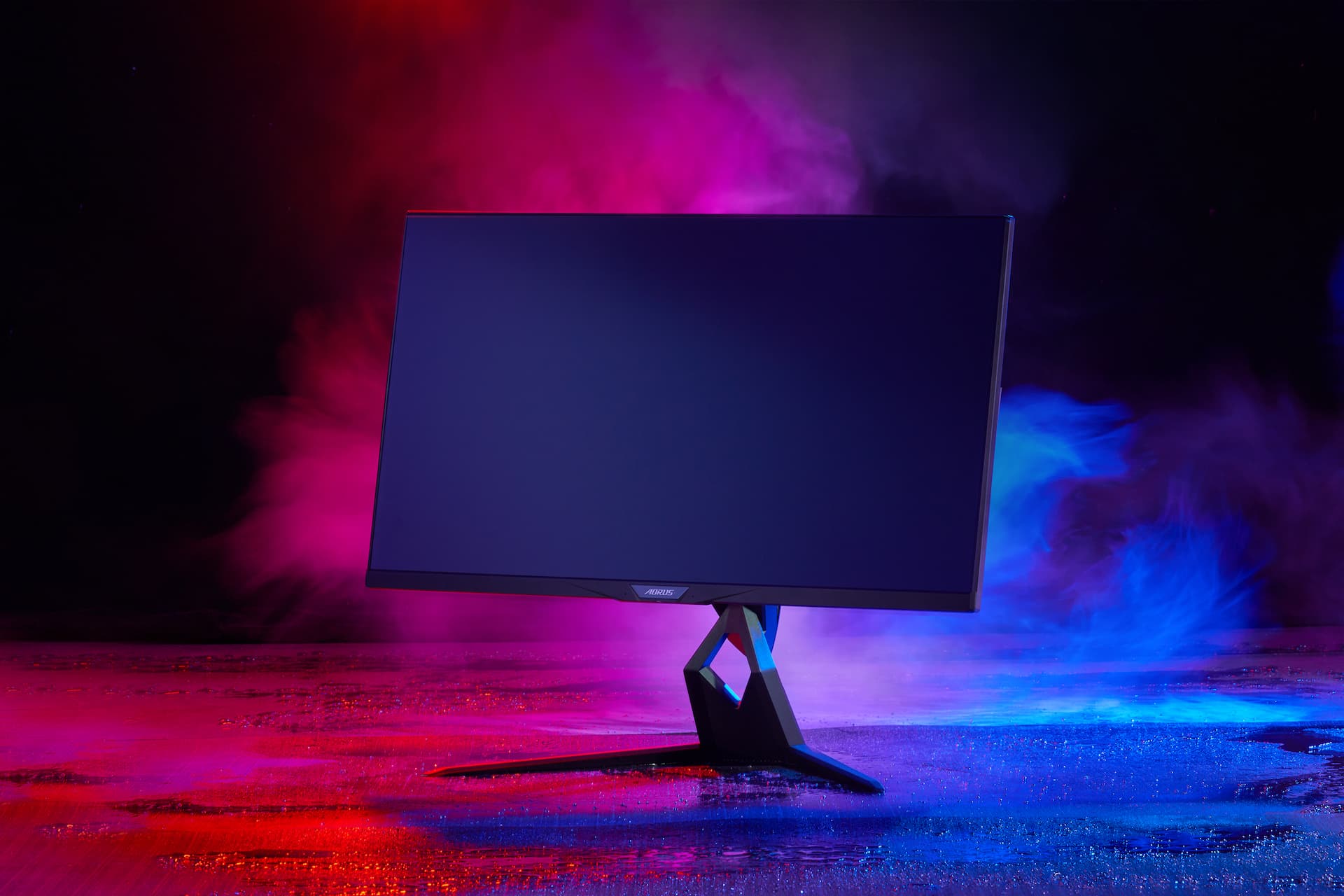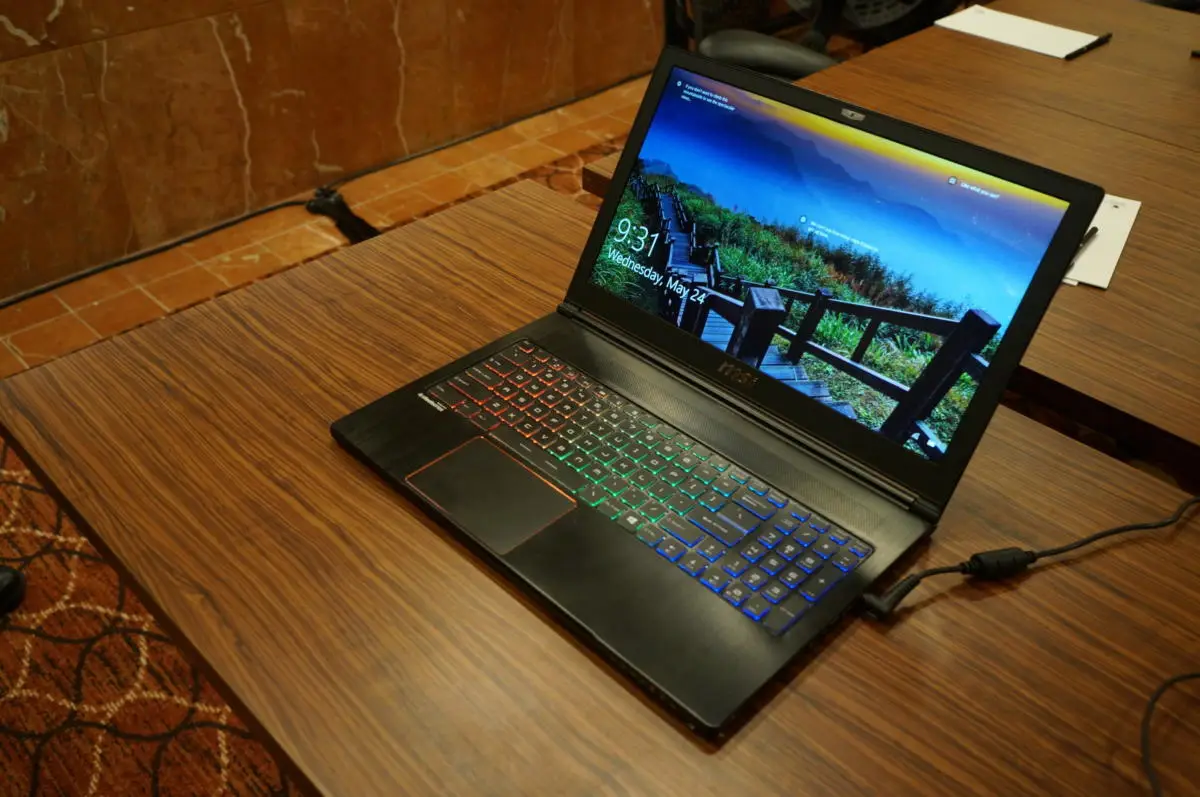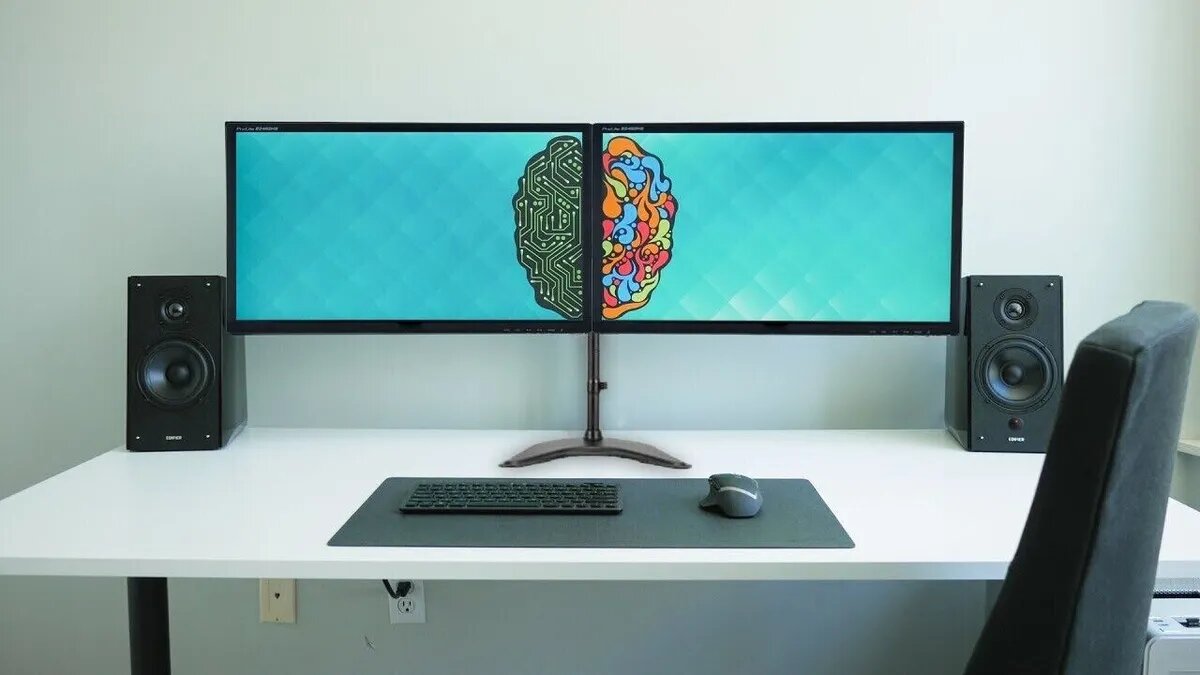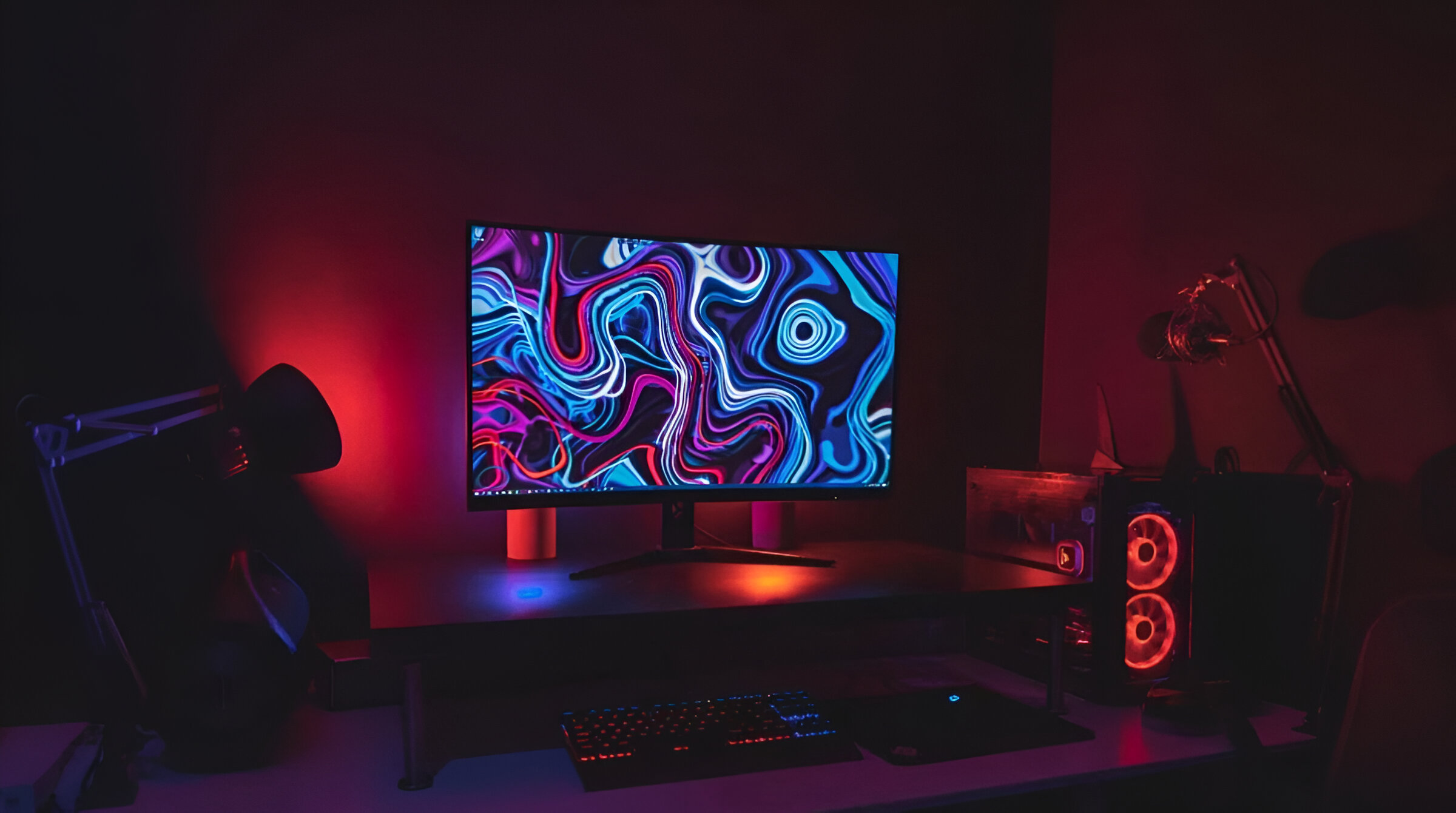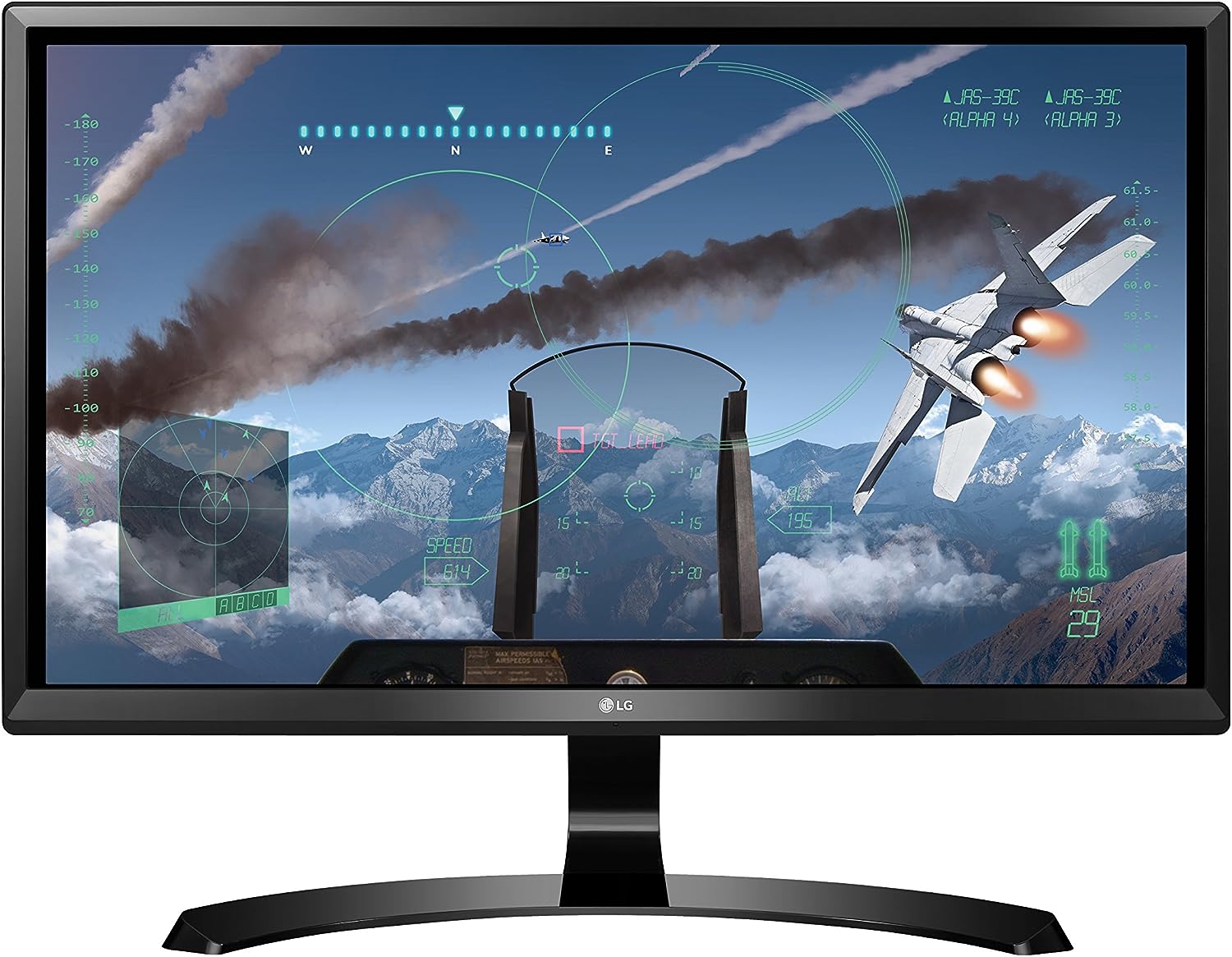Introduction
Welcome to our comprehensive guide on IP ratings! If you’ve ever purchased any electronic devices or outdoor equipment, you may have come across the term “IP rating”. But what exactly does it mean? And why is it important? In this article, we will delve into the world of IP ratings and provide you with a clear understanding of what they entail.
An IP rating, short for Ingress Protection rating, is a standardized system used to classify the level of protection that a device or equipment offers against various environmental factors such as solids (dust, debris) and liquids (water, moisture). This rating system provides consumers with a quick and easy way to determine whether a product is suitable for their specific needs and requirements.
Understanding IP ratings is crucial, especially when purchasing electronic devices or equipment that will be exposed to harsh or challenging environments. Whether it’s a waterproof smartphone, a rugged outdoor camera, or industrial machinery, knowing the IP rating of the product ensures that it can withstand the intended conditions and perform reliably.
The IP rating system consists of two digits, each serving a specific purpose. The first digit indicates the level of protection against solid objects, while the second digit denotes the level of protection against liquids. The higher the digit, the greater the protection provided.
To make things simpler, we will break down each digit and explain its meaning in detail. Additionally, we’ll explore some common IP ratings that you are likely to encounter, such as IP65, IP67, and IP68, and highlight their corresponding levels of protection.
So, whether you’re an outdoor enthusiast, a tech-savvy individual, or simply curious about IP ratings, this guide will equip you with the knowledge to make informed decisions when it comes to choosing products that offer the right level of protection for your specific needs. Let’s dive in and unravel the world of IP ratings!
What is an IP Rating?
An IP rating, also known as an Ingress Protection rating, is a standard system used to classify the level of protection that a device or equipment provides against solids (such as dust and debris) and liquids (like water and moisture). It is an internationally recognized standard outlined in the IEC 60529 standard. IP ratings are commonly used in various industries, including consumer electronics, outdoor equipment, industrial machinery, and medical devices.
The purpose of an IP rating is to inform consumers about a product’s ability to withstand different environmental conditions. With an IP rating, you can easily determine whether a device is suitable for your specific needs and the level of protection it offers against potential hazards.
The IP rating system consists of two digits: the first digit indicates the level of protection against solid objects, and the second digit indicates the level of protection against liquids. The higher the number, the better the protection. For example, an IP68 rating provides a higher level of protection than an IP65 rating.
It’s important to note that an IP rating does not cover other factors such as shock resistance, chemical resistance, or electromagnetic interference. These aspects may have separate standards and certifications, depending on the nature of the product.
Having a clear understanding of IP ratings is crucial when selecting devices or equipment that will be exposed to different environmental factors. For example, if you’re planning to use a smartphone around water, you’ll want to choose a device with a high IP rating to ensure it is protected against water ingress.
By familiarizing yourself with IP ratings, you can make informed decisions while considering the environmental conditions that a product will encounter. Whether you’re looking for a rugged camera for outdoor adventures or a waterproof smartwatch for swimming, understanding the IP rating will help you find a device that meets your requirements and offers the necessary protection.
In the next section, we will explore the details of the IP code and explain the meaning behind each digit. This will give you a deeper understanding of how IP ratings are structured and what they signify in terms of protection against solids and liquids.
Understanding the IP Code
The IP code, which stands for Ingress Protection code, is a standardized rating system used to classify the degree of protection that a device or equipment offers against the intrusion of solids and liquids. The IP code is outlined in the IEC 60529 standard and is recognized internationally.
The IP code consists of the letters “IP” followed by two digits. The first digit indicates the level of protection against solid objects, while the second digit denotes the level of protection against liquids. Let’s take a closer look at each digit and what it signifies.
The first digit in the IP code ranges from 0 to 6, indicating the level of protection against solid objects. Here’s a breakdown of each level:
- 0 – No protection: The device offers no protection against solid objects.
- 1 – Protection against objects larger than 50mm: The device is protected against large objects, such as a hand.
- 2 – Protection against objects larger than 12.5mm: The device is protected against medium-sized objects, such as fingers.
- 3 – Protection against objects larger than 2.5mm: The device is protected against small objects, such as tools or wires.
- 4 – Protection against objects larger than 1mm: The device is protected against tiny objects, such as small screws or nails.
- 5 – Dust protected: The device is completely protected against dust ingress. However, some dust may still enter in a minimal amount.
- 6 – Dust-tight: The device is completely sealed against dust, ensuring no ingress whatsoever.
The second digit in the IP code ranges from 0 to 9, indicating the level of protection against liquids. Let’s break down each level:
- 0 – No protection: The device offers no protection against liquids.
- 1 – Protection against vertically falling droplets: The device can withstand vertically falling droplets, such as condensation.
- 2 – Protection against vertically dripping water: The device can withstand vertically dripping water when tilted up to 15 degrees.
- 3 – Protection against spraying water: The device can handle spraying water at an angle up to 60 degrees from vertical.
- 4 – Protection against splashing water: The device is protected against splashing water from any direction.
- 5 – Protection against water jets: The device can withstand the force of water jets from any direction.
- 6 – Protection against powerful water jets: The device can handle powerful water jets with increased pressure.
- 7 – Protection against temporary immersion in water: The device can be submerged in water for a limited time.
- 8 – Protection against continuous immersion in water: The device can be submerged in water continuously for a prolonged period.
- 9 – Protection against high-pressure and steam cleaning: The device can withstand high-pressure and steam cleaning.
Understanding the IP code is essential for selecting devices or equipment that can withstand the specific environmental conditions they will be exposed to. Whether you need a device for dusty construction sites or waterproof equipment for underwater activities, knowing the IP code will help you make the right choice.
The first digit: Protection against solids
The first digit of the IP code is critical in determining the level of protection provided against solid objects. It ranges from 0 to 6, with each level indicating an increasing level of protection. Let’s dive into each level to understand what they mean:
- 0 – No protection: A device with an IP0X rating provides no protection against solid objects. It is essential to keep in mind that this level of protection does not guarantee any resistance against dust or debris. Devices with an IP0X rating should be used only in controlled environments where there is no risk of solid objects causing damage.
- 1 – Protection against objects larger than 50mm: Devices with an IP1X rating offer protection against solid objects larger than 50mm. This level of protection is typically suitable for environments where there is minimal risk of small objects getting into the device.
- 2 – Protection against objects larger than 12.5mm: With an IP2X rating, devices provide protection against solid objects larger than 12.5mm. This level of protection ensures that fingers or similar objects cannot enter the device and cause any harm.
- 3 – Protection against objects larger than 2.5mm: Devices rated as IP3X offer protection against solid objects larger than 2.5mm. This level of protection ensures that tools, wires, and other small objects cannot penetrate the device.
- 4 – Protection against objects larger than 1mm: A device with an IP4X rating provides protection against solid objects larger than 1mm. This means that even small screws, nails, or similar-sized objects cannot enter the device and cause damage.
- 5 – Dust protected: An IP5X rating indicates that the device is protected against the ingress of dust. While it is not entirely dust-tight, this level of protection ensures that the amount of dust entering the device is minimal and won’t affect its functionality.
- 6 – Dust-tight: Devices with an IP6X rating offer complete protection against the ingress of dust. This level of protection ensures that no dust can enter the device, making it suitable for environments with high dust concentrations.
When considering the first digit of an IP rating, it’s essential to assess the environmental conditions in which the device will be used. For example, an IP0X rating may be acceptable for indoor use or controlled environments, while an IP6X rating would be necessary for devices used in dusty construction sites, factories, or outdoor rugged environments.
By understanding the first digit of the IP code, you can confidently select devices that provide the appropriate level of protection against solid objects, ensuring their durability and longevity in the desired operating conditions.
The second digit: Protection against liquids
The second digit of the IP code indicates the level of protection provided against liquids. It ranges from 0 to 9, with each level signifying an increasing degree of protection. Let’s break down the meaning behind each level:
- 0 – No protection: A device with an IPX0 rating provides no protection against liquids. It is important to note that this level of protection does not guarantee resistance against water or any other liquid substances. Devices with an IPX0 rating should be used in dry environments where there is no risk of liquid exposure.
- 1 – Protection against vertically falling droplets: An IPX1-rated device can withstand vertically falling droplets, such as condensation or light rain. It offers limited protection against dripping water from directly above the device at a 90-degree angle.
- 2 – Protection against vertically dripping water: Devices with an IPX2 rating are protected against vertically dripping water when the device is tilted up to 15 degrees from its normal position. This level of protection safeguards against moderate splashes and light rainfall.
- 3 – Protection against spraying water: An IPX3-rated device can handle spraying water at an angle up to 60 degrees from vertical. It is designed to withstand water splashes from various directions, making it suitable for outdoor use during rain showers or near water bodies.
- 4 – Protection against splashing water: Devices with an IPX4 rating offer protection against splashing water from any direction. This level of protection ensures that the device can withstand water splashes from all sides, making it ideal for outdoor activities and environments where water exposure is common.
- 5 – Protection against water jets: An IPX5-rated device can withstand water jets from all directions. It is designed to handle powerful water jets, such as those encountered during heavy rain or while using a high-pressure water cleaner.
- 6 – Protection against powerful water jets: Devices with an IPX6 rating provide protection against powerful water jets with increased pressure. This level of protection ensures that the device can withstand strong water jets without any water ingress.
- 7 – Protection against temporary immersion in water: An IPX7-rated device can withstand immersion in water up to a certain depth and time duration specified by the manufacturer. This level of protection allows the device to be submerged in water temporarily without any detrimental effects.
- 8 – Protection against continuous immersion in water: Devices with an IPX8 rating offer protection against continuous immersion in water beyond the depth and time duration specified by the manufacturer. It means that the device can be submerged in water for an extended period without any damage.
- 9 – Protection against high-pressure and steam cleaning: An IPX9-rated device can withstand high-pressure and steam cleaning. It is designed to endure intense water exposure, making it suitable for industrial and heavy-duty applications.
When considering the second digit of an IP rating, it is crucial to evaluate the level of liquid exposure that the device is likely to face. For example, an IPX4 rating may be sufficient for devices used in outdoor activities, while an IPX7 or IPX8 rating may be essential for devices used in underwater environments, such as diving cameras or waterproof watches.
By understanding the second digit of the IP code, you can confidently choose devices that offer the appropriate level of protection against liquids, ensuring their reliability and functionality in various wet or humid conditions.
Common IP ratings and their meanings
Now that we have explored the first and second digits of the IP code, let’s dive into some of the most common IP ratings encountered in consumer electronics, outdoor equipment, and industrial applications. Understanding these ratings will give you an idea of the level of protection a device offers against solids and liquids. Here are a few examples:
IP65: Dust-tight and protected from water jets
An IP65-rated device is completely dust-tight, providing excellent protection against the ingress of solid objects. It is also protected against water jets projected from a nozzle at a specific pressure from any direction. This rating is commonly found in outdoor lighting fixtures, security cameras, and industrial equipment that require protection from dust and water exposure.
IP67: Dust-tight and protected from immersion in water
The IP67 rating guarantees complete protection against the ingress of dust and accidental immersion in water up to a maximum depth and duration specified by the manufacturer. Devices with this rating, such as waterproof smartphones and fitness trackers, can withstand submersion in water for a limited time without suffering any damage.
IP68: Dust-tight and protected from continuous submersion in water
An IP68 rating provides the highest level of protection against solids and liquids. Devices with this rating are completely dust-tight and can withstand continuous submersion in water beyond the maximum depth and duration specified by the manufacturer. IP68-rated devices, such as rugged cameras and underwater diving equipment, can confidently handle prolonged exposure to water without compromising their functionality.
IPX4: Protected from splashes of water
The IPX4 rating indicates that a device is protected from splashes of water from any direction. While it does not provide complete protection against immersion or strong water jets, an IPX4-rated device is suitable for use in environments where water splashes are expected, such as portable Bluetooth speakers used outdoors or kitchen appliances near the sink.
IPX7: Protected from accidental immersion in water
Devices with an IPX7 rating can withstand accidental immersion in water up to a certain depth and time duration specified by the manufacturer. This rating is commonly found in waterproof headphones, shower speakers, and some smartwatches. While not recommended for continuous submersion, these devices offer reliable protection against water damage during accidental or brief water exposure.
It’s important to note that these are just a few examples of common IP ratings. Depending on the specific requirements of your device and the environmental conditions it will encounter, other IP ratings may be applicable. Always refer to the manufacturer’s specifications to ensure that the device meets your desired level of protection.
By familiarizing yourself with these common IP ratings, you can make informed decisions when selecting devices or equipment that offer the appropriate level of protection against solids and liquids, ensuring their reliability and durability in diverse operating conditions.
IP65: Dust-tight and protected from water jets
The IP65 rating is one of the most common and versatile IP ratings found in various electronic devices, outdoor equipment, and industrial applications. An IP65-rated device offers a high level of protection against both solids and liquids. Let’s dig into the specifics of IP65 and what it means for device protection.
The first digit of the IP65 rating, “6,” signifies that the device is completely dust-tight. It provides an excellent level of protection against the ingress of solid objects, such as dust, dirt, or debris. With this level of protection, you can confidently use the device in environments where dust is prevalent, such as construction sites or manufacturing facilities.
The second digit, “5,” indicates the device’s ability to withstand water jets. IP65-rated devices are protected from water jets projected from a nozzle at a specific pressure from any direction. This means that the device can handle exposure to rain, splashing water, or water jets used for cleaning purposes without sustaining damage. However, it is important to note that IP65-rated devices are not designed for continuous immersion in water or submersion in liquids.
The IP65 rating is commonly found in a range of products, including outdoor lighting fixtures, security cameras, industrial equipment, and certain consumer electronics. For example, outdoor LED lights with an IP65 rating can be safely installed in outdoor environments without worrying about dust or water damage. Similarly, security cameras with this rating can endure various weather conditions, ensuring continuous surveillance in demanding outdoor settings.
When considering an IP65-rated device, it is crucial to understand its limitations. While it offers reliable protection against dust and water jets, it may not be suitable for full immersion in water or exposure to highly pressurized water sources. Therefore, it’s important to adhere to the manufacturer’s guidelines for proper usage and avoid exposing the device to conditions that exceed its IP65 rated capabilities.
Overall, an IP65 rating provides peace of mind when using electronic devices or equipment in conditions where dust and water exposure are expected. Whether you’re using outdoor lighting, surveillance cameras, or other devices designed for rugged environments, the IP65 rating ensures they can withstand dust and water jets, making them a reliable choice for various applications.
IP67: Dust-tight and protected from immersion in water
The IP67 rating is a widely recognized standard that indicates a high level of protection against both solids and liquids. Devices with an IP67 rating are considered dust-tight and can withstand immersion in water up to a certain depth and duration specified by the manufacturer. Let’s explore what this IP rating means and its implications for device protection.
The first digit of the IP67 rating, “6,” indicates that the device is completely dust-tight. It provides an excellent level of protection against the ingress of solid objects, preventing dust, dirt, or debris from entering and potentially harming the device’s internal components. This level of protection ensures reliable operation, particularly in environments where dust is prevalent, such as construction sites or manufacturing facilities.
The second digit, “7,” signifies the device’s ability to withstand immersion in water. IP67-rated devices can handle immersion in water up to a certain depth and duration specified by the manufacturer. This means that the device can withstand accidental submersion, such as dropping it into a body of water or exposing it to wet environments, without suffering any significant damage. However, it is important to note that IP67-rated devices are not designed for continuous underwater usage or protection against pressurized water jets.
Devices with an IP67 rating are commonly found in a range of applications, including smartphones, tablets, smartwatches, outdoor speakers, and rugged outdoor equipment. For instance, an IP67-rated smartphone can handle exposure to rain, splashes, or accidental submersion, ensuring that the device remains functional even in wet conditions.
When considering an IP67-rated device, it is essential to understand its limitations. While it offers significant protection against dust and immersion in water, it may not be suitable for use in extreme underwater environments or prolonged exposure to liquid. Following the manufacturer’s guidelines for usage and ensuring that the device is properly sealed and maintained will help maximize its longevity and performance.
In summary, an IP67 rating provides a high level of protection against both dust and water immersion. Whether you’re using a smartphone, outdoor speaker, or other devices designed for outdoor or rugged environments, the IP67 rating assures you that the device can withstand accidental submersion and operate reliably even in wet conditions.
IP68: Dust-tight and protected from continuous submersion in water
The IP68 rating is one of the highest levels of protection against solids and liquids. Devices with an IP68 rating are considered dust-tight and can withstand continuous submersion in water without suffering any significant damage. Let’s explore what this IP rating means and how it ensures robust protection for devices.
The first digit of the IP68 rating, “6,” signifies that the device is completely dust-tight. It provides the highest level of protection against the ingress of solid objects, ensuring that no dust particles can penetrate the device and affect its functionality. The device is sealed tightly enough to prevent any harmful dust or debris from entering, making it suitable for environments where dust exposure is a concern.
The second digit, “8,” signifies the device’s ability to withstand continuous submersion in water. IP68-rated devices can handle prolonged immersion in water beyond the maximum depth and duration specified by the manufacturer. This means that the device remains protected even when fully submerged, making it ideal for underwater activities and harsh wet environments.
Devices with an IP68 rating can range from waterproof smartphones and smartwatches to underwater cameras and rugged outdoor equipment. For example, an IP68-rated smartphone can be submerged in water for extended periods without experiencing any water damage. This level of protection is especially valuable for individuals who engage in water sports, swimming, or hiking in challenging weather conditions.
However, it is important to note that the IP68 rating does not guarantee protection against other liquids, such as corrosive chemicals or high-pressure water jets. It is crucial to follow the manufacturer’s guidelines and limitations to maintain the integrity of the device and ensure its long-term performance.
When considering an IP68-rated device, it is essential to assess the specific environmental conditions in which the device will be used. While it provides exceptional protection against water immersion, factors such as temperature, depth, and exposure to other liquids or substances may affect the device’s performance. It’s always important to adhere to the manufacturer’s instructions and recommendations to optimize the device’s durability and reliability.
In summary, the IP68 rating offers unparalleled protection against dust and continuous submersion in water. Whether you’re in need of a waterproof smartphone, a durable underwater camera, or any other device that can withstand harsh and wet environments, IP68-rated devices ensure robust protection, giving you peace of mind in various challenging conditions.
IPX4: Protected from splashes of water
The IPX4 rating indicates a device’s ability to withstand splashes of water from any direction. While it does not provide complete protection against immersion or strong water jets, an IPX4-rated device offers sufficient protection against water splashes. Let’s explore what this IP rating means and its implications for device protection.
The “X” in IPX4 denotes that the first digit, which typically indicates protection against solid objects, is not specified or relevant in this particular rating. However, the second digit remains significant, representing the device’s level of protection against liquids.
Devices with an IPX4 rating can handle splashes of water from any direction without suffering any significant damage. This means that the device is adequately protected when exposed to rain showers, accidental spills, or similar water splashes. While it may not be suitable for full submersion or exposure to powerful water pressure, an IPX4-rated device provides peace of mind in environments where water splashes are expected.
IPX4-rated devices are commonly found in various applications, such as portable speakers, headphones, and outdoor electronics. For example, an IPX4-rated Bluetooth speaker can safely be used by the poolside or during outdoor activities without worrying about water splashes affecting its functionality.
It is important to note that IPX4-rated devices may be more vulnerable to prolonged exposure to water or heavy rainfall. While they can handle temporary splashes, extended exposure may compromise their protection. Therefore, it’s essential to use them responsibly and avoid subjecting them to excessive water exposure beyond their IPX4-rated capabilities.
When considering an IPX4-rated device, understanding its limitations is crucial. While it provides reliable protection against water splashes, it is not designed for full immersion or water-resistant operation in demanding environments. Always refer to the manufacturer’s guidelines to ensure the device’s proper usage and maintenance.
In summary, an IPX4 rating offers protection against splashes of water from any direction, making it suitable for devices used in environments where water exposure or accidental spills are common. From portable speakers to outdoor electronics, IPX4-rated devices can withstand water splashes effectively, enhancing their durability and ensuring a seamless experience for users.
IPX7: Protected from accidental immersion in water
The IPX7 rating signifies a device’s ability to withstand accidental immersion in water. While it is not designed for continuous submersion or harsh water environments, an IPX7-rated device offers reliable protection when temporarily submerged in water. Let’s explore what this IP rating entails and how it ensures device safety.
The “X” in IPX7 indicates that the first digit, typically denoting protection against solid objects, is not specified or relevant in this particular rating. However, the second digit holds significance in determining the device’s level of protection against liquids.
An IPX7-rated device can withstand accidental immersion in water up to a certain depth and duration specified by the manufacturer. This means that it remains protected and functional when briefly submerged, such as dropping it in water or exposing it to wet environments. However, it is important to note that IPX7-rated devices are not designed for continuous underwater usage or protection against powerful water jets.
Devices with an IPX7 rating can be found in various applications, including waterproof speakers, activity trackers, and some smartphones. For example, IPX7-rated Bluetooth speakers can safely withstand being dropped in a pool or lake and still continue working after retrieval. Similarly, IPX7-rated smartphones provide added peace of mind against accidental water exposure, such as accidentally dropping it in a sink or getting caught in a rain shower.
While IPX7-rated devices offer reliable protection against accidental immersion, it is important to follow the manufacturer’s instructions and limitations. Exceeding the specified depth or duration of immersion may compromise the device’s integrity and lead to water damage. Additionally, it is crucial to inspect the device for any damage or wear before immersing it in water to ensure its continued protection.
In summary, the IPX7 rating offers effective protection against accidental immersion in water. Devices with this rating can handle short-term submersion without suffering significant damage. Whether you’re enjoying music by the poolside or using a smartphone near water, the IPX7 rating provides the assurance that your device is protected from accidental water exposure, enhancing its longevity and ensuring it remains functional.
Choosing the right IP rating for your needs
When selecting devices or equipment, it’s essential to choose the appropriate IP rating that aligns with your specific needs and the environmental conditions the device will encounter. Here are some factors to consider when choosing the right IP rating:
Assess the environmental conditions:
Start by evaluating the conditions in which the device will be used. Consider factors such as dust levels, presence of water or liquids, exposure to moisture, and the possibility of accidental submersion. Understanding the environmental hazards will help you determine the level of protection required for your device.
Identify potential hazards:
Identify the specific solids and liquids that your device needs protection against. Are there high levels of dust or debris in the environment? Will the device be exposed to rain, water splashes, or accidental submersion? By understanding the potential hazards, you can narrow down the appropriate IP rating for your device.
Refer to manufacturer guidelines:
Manufacturers typically provide guidelines and recommendations regarding the suitable IP rating for their devices. Refer to the product specifications and user manuals to ensure you follow the manufacturer’s suggestions for the intended usage and environmental conditions.
Consider durability requirements:
If you’re using the device in rugged environments, such as construction sites or outdoor adventures, you may need a higher IP rating to ensure greater durability. Assess the device’s intended usage and the level of ruggedness required to make an informed decision about the appropriate IP rating.
Balance cost and functionality:
While higher IP ratings may offer greater protection, they often come at a higher cost. Consider the balance between the device’s intended usage, required protection, and your budget. Determine the level of functionality and protection that is truly necessary for your specific needs.
Rely on reputable certifications:
Look for devices that have been tested and certified by reputable organizations for their IP ratings. Certifications such as those from the IEC (International Electrotechnical Commission) offer assurance that the devices meet the specified IP rating standards.
By considering these factors and making an informed decision, you can choose the right IP rating that provides the necessary protection for your device based on the environmental conditions and potential hazards it will face. Remember, finding the optimal IP rating ensures the longevity, reliability, and performance of your device.
Conclusion
Understanding IP ratings is essential when selecting devices or equipment that will be exposed to different environmental conditions. IP ratings provide valuable information about a device’s ability to withstand solids and liquids, allowing you to make informed decisions and choose the right level of protection for your specific needs.
The IP code, consisting of two digits, provides a standardized system for classifying protection against solids and liquids. The first digit indicates the level of protection against solid objects, while the second digit denotes the level of protection against liquids. Higher numbers indicate greater protection.
From IP65, offering protection against dust and water jets, to IP68, providing complete dust-tightness and continuous submersion in water, there are various IP ratings to consider. Each rating has its own implications and applicability, depending on the device’s intended usage and environmental conditions.
When choosing the right IP rating, it’s important to assess the environmental conditions, identify potential hazards, refer to manufacturer guidelines, consider durability requirements, and find a balance between cost and functionality. Additionally, relying on reputable certifications adds credibility to the device’s IP rating.
By selecting the appropriate IP rating, you can ensure that your device is adequately protected against solids and liquids, enhancing its durability, reliability, and longevity. Whether it’s a waterproof smartphone, a rugged outdoor camera, or industrial equipment, understanding IP ratings empowers you to choose devices that can withstand the demands of your specific environment.
Remember, always refer to the manufacturer’s specifications and guidelines to ensure proper usage and maintenance of devices with specific IP ratings. Making informed decisions based on the IP rating will equip you with devices that can confidently withstand the intended environmental conditions, providing peace of mind and optimum performance.







